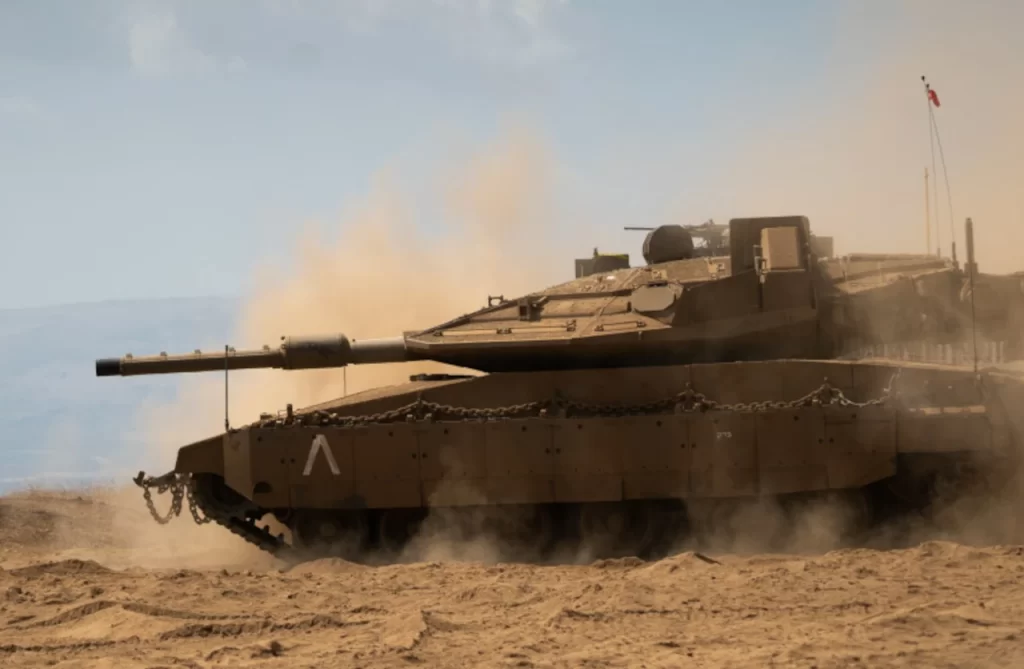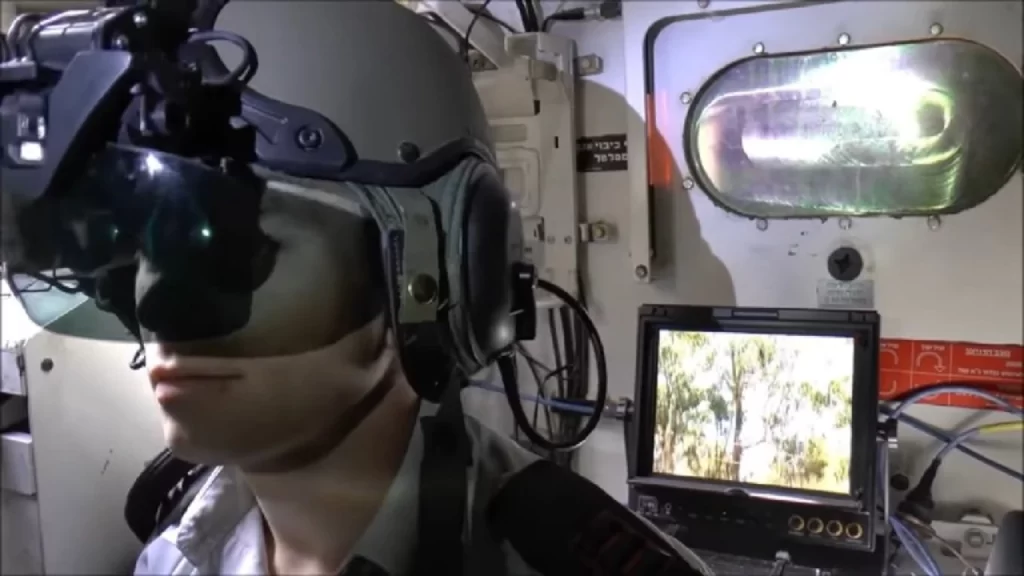The “Barak,” the newest fifth-generation battle tank, was recently presented to the public by the Israeli Ministry of Defence. The tank features artificial intelligence algorithms and target detection sensors with a spectrum encompassing 360 degrees. The Israeli Defence Forces’ (IDF) 52nd Armoured Battalion was the recipient of the first tanks, which were just recently delivered. These tanks are meant for training the future crews.
Barak belongs to the Merkava series. It is the fifth generation iteration of the Merkava tank. Although it is technically a tank, its design, capabilities, and functions distinguish it from the other models in the series. The IDF will eventually switch out their outdated Mark 3 tanks for Baraks.
The new configuration of the Merkava tank includes extensive solutions provided by Elbit Systems. These solutions include upgraded sights, improved night vision capabilities, fire control systems for main battle tanks (MBTs), E-LynX software defined radios (SDRs), an IronVision head mounted display for 360° situational visibility and enhanced operational capabilities, and Rafael’s upgraded Trophy active protection system.

The new tank has been in research and development for over five years. In 2015, the Armoured Corps began research on creating a new tank. The tank’s development cycle kicked off in 2018. The testing started in 2020. It was built by the collaborative efforts of the Defence Ministry’s Directorate of Defence Research and Development, the Israel Defence Forces Ground Forces, the Armoured Corps, and the 401st Brigade.
Elbit Systems, Rafael, and Elta, a division of Israel Aerospace Industries, worked with several other Israeli defence companies to develop the Barak tank. Israel’s Ministry of Defence funded this project. The tank is fitted with sensors for target recognition. It is a component of an integrated system that enables real-time information transmission between the tank and other military units, ushering in what IDF refers to as a “revolution on the battlefield.”
The Merkava IV tank has undergone additional upgrading to become the Barak, incorporating technological improvements in armoured protection and digital warfare. Barak’s driver’s seat is located on the left side of the hull, the turret is in the back, and the engine is in the front, which is very similar to its predecessor in terms of design. A crew of four personnel operates the tank: the driver, the commander, the gunner, and the loader.
Regarding its firepower, Barak keeps the same armament configuration as the Merkava IV. This includes using a 120mm smoothbore gun manufactured by Israel Military Industries. This gun can fire high-penetration projectiles and guided ammunition at distances of up to four kilometres. The additional weaponry consists of a pair of 7.62mm machine guns, an additional 7.62mm machine gun installed on the right side of the turret, and a 60mm mortar situated within the turret.

As per Times of Israel, The high-tech helmet, designed by Elbit Systems and given the name IronVision, is one of the most remarkable aspects of the tank. It gives the tank commander a panoramic battlefield picture with artificial intelligence recognition and computerised target marking. According to Elbit, the helmet produces an image that enables the crew to ‘see through’ the tanks’s armour. This will assist the soldiers in “overcoming inherent visibility restrictions” while enhancing mission efficiency and safety. According to the ministry, the device would enable real-time target location using artificial intelligence and 360-degree scanning via head movement.
Compared to prior Merkava models, Elbit enhanced the Barak’s sights and night vision for the Barak tank. The defence contractor also supplied the tank with a new touchscreen-based user interface displaying pertinent information to each crew member.
In contrast to previous Merkava models, in which the tank commander was either vulnerable to sniper fire or less able to see his surroundings, these systems allow soldiers to fight while the tank is entirely sealed, with no hatches open. The tank’s firepower has been increased, and its fire control system, which Elbit created, enables it to perform precise combat on the move during the day and the night.
Rafael is responsible for developing an improved anti-missile system of the Windbreaker Active Protection System (IDF designation for the Trophy Active Protection System), included in the Barak tank. It consists of a radar detection system that detects incoming missiles and predicts their trajectories and launchers that discharge metal pellets resembling buckshot, causing the incoming missile or rocket to explode away from the tank.
As Israel prepares to honour the passage of 50 years since the Yom Kippur War of 1973, the country’s Minister of Defence, Yoav Gallant, emphasised the symbolic significance of the tank’s presentation. He said the Barak tank represents a “great leap ahead” in the capabilities of the armoured corps and that it will constantly ensure the qualitative advantage of the IDF, both in defence and offence.
Since the 1980s, the Merkava has been the IDF’s primary battle tank. In recent years, the Armoured Corps has supplanted most of its Merkava Mark 3 vehicles with the Mark 4 introduced in 2003. According to the ministry, the Barak will ultimately become the primary battle tank of the Armoured Corps.
About the author
Girish Linganna is a Defence & Aerospace analyst and is the Director of ADD Engineering Components (India) Pvt Ltd, a subsidiary of ADD Engineering GmbH, Germany with manufacturing units in Russia. He is Consulting Editor Industry and Defense at Frontier India.

